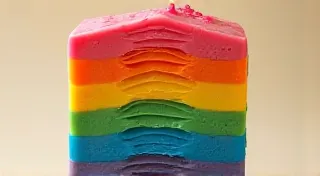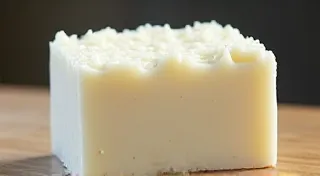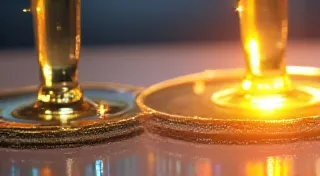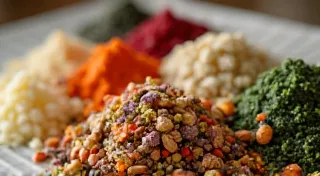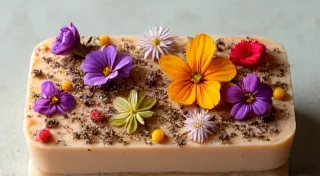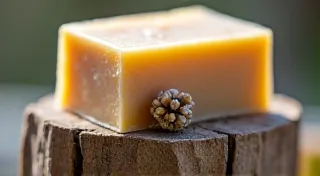Soapmaking Techniques: Swirling, Marbling, and More!
Beyond the basics of soapmaking lies a whole universe of artistic expression. Once you're comfortable with the fundamental process of combining oils, lye, and water, exploring advanced techniques like swirling and marbling can transform your homemade soap from functional to truly stunning works of art. This article will dive into these techniques, providing detailed instructions and troubleshooting tips to help you achieve breathtaking results. Before venturing into artistic designs, it’s essential to understand the foundational principles. If you’re new to the process, you might find our Ultimate Guide to Cold Process Soapmaking a helpful starting point.
Understanding the Science Behind the Swirl
Swirling, at its core, relies on the difference in viscosity between different soap batches. By creating layers of soap with slightly varying temperatures and/or levels of fragrance, you can manipulate how they interact during the pouring process, creating mesmerizing patterns. A cooler soap base tends to be thicker and will sit on top of a warmer, thinner base.
Key Factors for Successful Swirling:
- Temperature: This is *critical*. Generally, one batch should be significantly cooler (around 100-110°F) and the other warmer (around 120-130°F). Using a digital thermometer is highly recommended. Small variations in temperature can have a noticeable effect – keeping precise records is crucial to reproduce designs consistently.
- Fragrance Oil: Fragrance oils have different densities. Some heavier oils will sink, while lighter oils will rise. This can be used to influence the swirl pattern, but it's more subtle than temperature differences. Understanding the nuances of different fragrance oils can be a fascinating aspect of soapmaking; some may react unexpectedly and create unpredictable patterns.
- Colorants: Similar to fragrance oils, some colorants are denser than others. Note how your chosen colorants behave in your soap base to better anticipate their placement in the swirl. Experimentation with different color combinations is encouraged, but remember to document your findings.
- Pouring Technique: Slow, deliberate pouring is essential. Don't rush! Alternating layers, drizzling, or even gently pushing soap across the surface can create different effects. Mastering this aspect takes practice, but the results are worth the effort.
Marbling: Creating Elegant Layers
Marbling is a more controlled technique that aims for distinct, layered bands of color rather than the intricate patterns of swirling. While swirling encourages mixing, marbling is about preventing it. Achieving that clean separation requires precise control of multiple variables. When dealing with lye, safety is paramount. Our article on Understanding Lye: Safety and Calculations for Soapmaking provides comprehensive information to ensure a safe and successful soaping experience.
Achieving a Marble Effect:
- Pouring Speed: A slower pouring speed is key to creating crisp, well-defined layers. This allows the layers to set before the next is added, minimizing bleed.
- Soap Consistency: Ensure each layer has a similar consistency. Variations can cause the layers to bleed together. If your consistencies vary, consider re-evaluating your recipe and process.
- Layer Thickness: Experiment with different layer thicknesses. Thicker layers will be more defined, while thinner layers can create a softer, blended effect. Careful measurement and record-keeping will allow for consistent replication.
- Cooling Time: Allow each layer to cool slightly before adding the next. This helps them set and prevents bleeding. It’s not just about cooling, but about allowing the soap to firm up sufficiently to support the subsequent layer.
Troubleshooting Common Swirling and Marbling Issues
Even with careful planning, things can sometimes go wrong. Here are a few common problems and how to address them:
- Muddy or Brown Soap: This often indicates that the soap bases were too warm or that they mixed too much during pouring. Lower the temperature of your bases and pour more deliberately. Sometimes, seemingly minor fluctuations in temperature can dramatically alter the final result.
- Colors Bleeding: This can be caused by bases that are too warm, inconsistent consistency between layers, or colorants that are too soluble. Using a higher percentage of natural colorants might contribute to bleed if not properly dispersed.
- Uneven Patterns: This can be due to uneven temperature or inconsistent pouring. Use a thermometer and practice your pouring technique. Even slight tremors can influence the patterns.
- Soap Settling and Separating: This can occur if your oils are not properly emulsified. Ensure thorough mixing of oils and lye water. Using a stick blender can help, but be careful not to over-blend.
Beyond the Basics: Experimentation is Key!
These techniques are just a starting point. Don't be afraid to experiment with different temperatures, fragrance oils, colorants, and pouring methods to create your own unique soap designs. The possibilities are truly endless. Adding botanical inclusions can add a unique texture and visual appeal to your soaps – explore our article on Working with Botanical Inclusions: Flowers, Herbs, and More for inspiration and guidance.
Keeping a detailed notebook to record your recipes and techniques is invaluable for replicating successful results and learning from your mistakes. Note down everything – temperatures, fragrance oil amounts, colorant types, pouring speeds, even the weather! Small details can have a significant impact. The creative process benefits immensely from meticulous observation and careful documentation. Think of each batch as an experiment, a chance to learn and refine your skills. Don't be discouraged by failures; they are simply opportunities to learn what *doesn't* work. Embrace the process, enjoy the journey, and let your creativity flow. Remember that soapmaking is not just about creating a product; it's about expressing yourself and sharing your passion with the world. Experimentation doesn't just involve changing individual components. It also includes combining techniques. Could you swirl a marbling design? Perhaps a layered effect with incorporated botanicals? The only limit is your imagination.
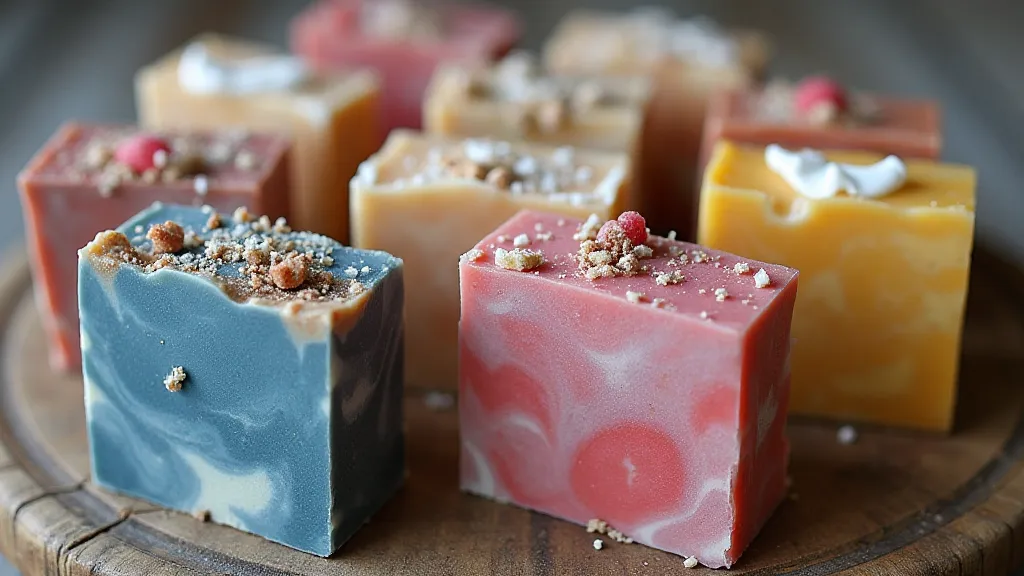
With practice and patience, you're well on your way to creating stunning, artisan soaps that are as beautiful as they are functional.
